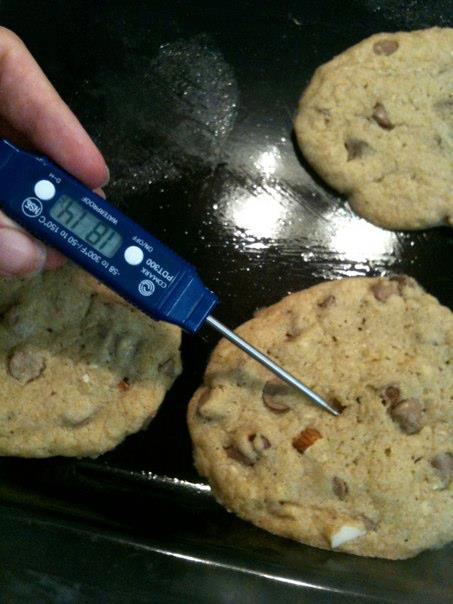In Oct. 2004, I gave a keynote talk at the Food Standards Australia New Zealand food safety conference in the Gold Coast, Australia.
Before the talk, I did a live bit for one of the morning talk shows – like Good Morning America, but it was Good Morning Australia. Washing shopping carts was of particular interest.
The interview was done remotely, with me in the kitchen of a somewhat swanky hotel and casino where the meeting was being held. Before we got started, I chatted with the chef (1).jpeg) about some random food safety stuff. I asked if he served sprouts and he replied he’d worked in southeast Asia, new the risks with raw, and always gave them a quick saute or blanch.
about some random food safety stuff. I asked if he served sprouts and he replied he’d worked in southeast Asia, new the risks with raw, and always gave them a quick saute or blanch.
I also noticed he had a tip-sensitive digital thermometer in the front pocket of his chef’s coat, and I asked if he used it, and he said all the time.
I asked if I could borrow the thermometer to use as a prop during the interview, and the media person accompanying me said something like, you can’t talk about thermometers, we can’t even get people to refrigerate their food; the fridge is for the beer.
Seven years later, and the consumer food safety types in Australia have started a push to use thermometers for food safety.
The Food Safety Information Council recommends meat thermometers be used to decrease the risk of food poisoning, but only 23% of Australian households own a meat thermometer and only a third of those with a one have used it in the last month, according to Council commissioned Newspoll research released today.
Food Safety Information Council Chair, Dr Michael Eyles said today, “A meat thermometer is a vital piece of kitchen equipment for both food safety and food quality reasons making it surprising that less than a quarter of households have one, and even more surprising that only about a third of those with one say they have used it in the past month.”
Following the lead of Elizabeth Weise of USA Today who last month wrote of the virtues of thermometers as gifts, Eyles said, “A meat thermometer makes a great Christmas present. … It is not only a small price to pay for the safety of your family and friends but is a minor cost to ensure food is consistently cooked to perfection.”
 The national Newspoll study of more than 1200 respondents, 18 years and over found:
The national Newspoll study of more than 1200 respondents, 18 years and over found:
• Nearly 1 in 4 (23%) households claim to have a meat thermometer at home. This varies across the country, ranging from 27% in Victoria, to 17% in Queensland.
• Higher income households are significantly more likely to have a meat thermometer. 28% of households with an income of $80,000+ claim to have a meat thermometer, compared to just 17% of households with an income of less than $30,000.
• Among those who have a meat thermometer, only 1 in 3 (35%) claim to have used it in the last month, with half of these (18%) claiming to have used it in the last week.
Self-reported surveys like this one still suck – meaning people know the socially acceptable or desirable answer and lie. So the number of people actually using thermometers is overinflated.
But look at Amy. From learning how to temp a chicken breast in 2005, she’s now using our Comark PDT 300 on bread and cookies to ensure optimum quality (those cookies reached 190-200 F and were excellent). With moving around, different ovens, the humidity, and always trying different recipes, there is significant variability in actual oven temps, moisture levels and heating efficiency. So stick it in.
.jpg)
